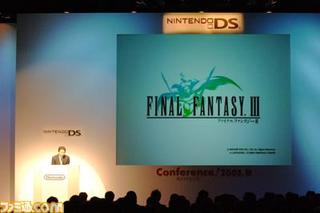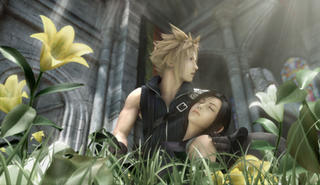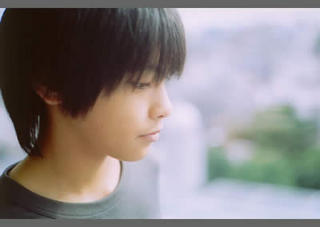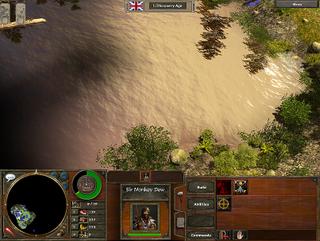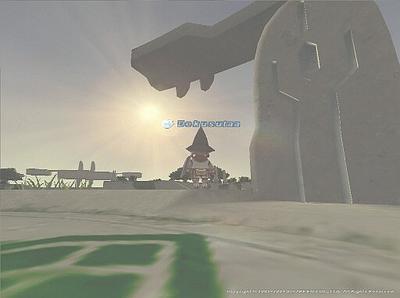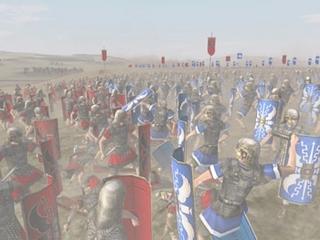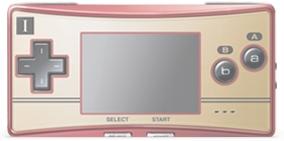Fresh from his trip to last weekend's Tokyo Game Show, WIRED’s
Chris Kohler, known on-line as Kobun Heat, was kind enough to offer to answer questions regarding Nintendo’s Revolution(ary) controller at Gaming-Age.com. In a cynical gaming forum populated with self declared pundits and experts, Mr. Kohler stands heads and shoulders above everyone else both in his ‘real’ expertise when it comes to talking about the controller and his journalistic credentials. He may be a Nintendo fan, but he’s always a journalist first. The following are edited Questions and Answers from forum readers and Mr. Kohler’s responses.
 Q:
Q: If you could change one thing about the controller, what would it be?
KH (Kobun Heat): If I could change one thing about the controller, it would be to put a Z trigger under the B trigger. The nunchuck attachment has two, so I'd like to see it balanced out.
Q: I want to know how you think Smash Brothers (Rev) would play on that remote. Intuitive? Comfortable?
KH: Are you talking about playing Super Smash Bros. Melee? If they retrofit the game design to use the controller, I guess the most obvious use of the pointer would be to do smash attacks. So you'd flick it around to choose the direction in which you want to smash.
However, I doubt that a Revolution Smash Bros. would just be the GameCube gameplay with a different controller.
Q: Did the controllers fit your hands well? Was the cord connecting them a sufficient length?
KH: The controller and attachment were definitely comfortable; the cord was of sufficient length.
Q: How does the controller feel and handle? Compared to existing technologies in the market does it handle better?
KH: I actually can't speak to the vagaries of the sensor, because it's not finalized and Nintendo was clear that we weren't discussing the nuts and bolts of the tech that day. So I really don't know. I can definitely say that you can point the thing at an angle at the TV, because that's the whole point of the device: you're not moving your whole arm around, you're just making very slight inflections with your wrist. When you hold it sideways, your fingers (or at least mine) don't slide into the slope on the back where the B-trigger sits. I didn't hold it that way for very long but I doubt it's going to make a difference.
Q: Which genre do you think will be most well suited for this type of controller (besides, perhaps somewhat obviously, FPS)? Which genre do you think will be most adversely affected by this type of controller?
KH: The Revolution controller, much like the Nintendo DS touch screen, takes away a barrier between people and machines. People loved to post that
Minority Report screen as a joke, but that's pretty damn close to at least the thought pattern behind the controller -- you just reach out with your hand and start manipulating things on-screen.For some people, a DualShock controller is just that sort of extension of their person. But it takes a lot -- some would say a lifetime -- of practice to get there.
Q: Several people have mentioned the controller would be unplayable because the user's arm/hand would grow tired after brief periods of use. How long did it take you to get accustomed to using the remote?
KH: I can't really compare the controller to existing tech. I can say that the learning curve was practically nonexistent. It's light. It's comfortable. It's goddamned precise.
Q: Did you see any kind of charging cradle? How about the range?
KH: No charging cradle was shown. Battery life or controller range were not mentioned. There were many different tech demos shown, each of which was meant to show a new gameplay style, not so much an idea for a retail product. Certainly the
Kuru Kuru Kururin demo could be a winner.
Q: (Reader comment) I think Nintendo may move the big A-button to the back side next to the B-button for the final build, but they're probably running a ton of tests with non-gamers right now to see how they react to different layouts.
KH: I think the big A button will definitely stay where it is. I'm not sure what the question about D-pads and buttons means.
Q: Any hints of games in development?
KH: Certainly I'm really excited about the possibilities of music games on the Revolution.
Samba De Amigo would be awesome as-is, with no big, bulky controller required -- just two standard pads. Or maybe even one controller with an inexpensive attachment that could be packed in. And that's not even mentioning
Ouendan, which I wasn't even the first person to bring up in our meeting.
 Q:
Q: How does
Metroid Prime work once your wrist can't turn any more? Specifically, how do you turn around and do 360 rotation?
KH: As far as
Metroid Prime 2, the honest answer is that it was so intuitive that I wasn't even thinking about HOW the controller was doing it. All I know is that I was easily able to spin in circles. If I recall correctly: if you move it further and further towards the left or right of the screen, Samus will start to spin around, and if you bring it back to the center she stops.
Q: Does it really register "3D movement"? I mean, can it actually keep track of the cooridantes/location of the controller within a space?
KH: The 3D movement thing: this is mostly speculation on my part but yes, I believe it can keep track of where the controller is in terms of 3D space. Again, we tried a variety of gameplay demos, but there was no specific, detailed explanation of the tech inside. But you can definitely do all the things they showed in the video since everything -- location, rotation, distance -- is measured.
Q: Wasn't the
Pilot Wings and "Blocky Shooting" thing both tech demos?
KH: The
Pilot Wings demo was just for movement of the plane. No speed control (but of course that's not to say that it would be impossible or difficult).
Q: Several people have mentioned the controller would be unplayable because the user's arm/hand would grow tired after brief periods of use. I believe comparisons were made to current gyroscopic technologies.
KH: When you play with a Wavebird, do you stand up and hold it at arm's length towards the screen? No. And you don't have to do this with the Revolution controller. You can sit with your hands in your lap and just move your wrist a little to cover the entire screen.
Q: How did the 'sensor bar' looks like?
KH: The sensor bar shown was a prototype, so it's not really indicative of what you'll use for the final product. But the sensors were small and unobtrusive.
Nintendo actually specifically said that the sensors were not in any way finalized. So be aware that this description may not reflect the final product. There were two small sensors -- about the size of a gum eraser -- that were attached to a small metal bar maybe the size of a ruler.
They were placed under the TV but they said there are many places you could put them. On top, on the sides, on the wall even. It's all very very up in the air, though.
Q: For the "shooting blocks" demo, is that using "light-gun" technology to target the objects or is it using the 3D "mouse" to move a cursor to the objects?
KH: For the shooting blocks demo, there was a visible cursor on screen that moved when you moved the controller around. I can't say much about HOW it worked: as far as the actual tech involved, again: I don't know, and neither does anyone else. All I can say is that after a few seconds using it, all I really had to do was think of a place I wanted the cursor to be and my hand moved there.
Q: Is the B trigger analog? What about the Z1/Z2 trigger? Or was it similar to the N64's Z-trigger?
KH: I don't THINK the triggers are analog.
Q: Do you have to keep the controller pointed exactly 90 degrees from the tv set to keep still? Or can it be rested at an off angle?
KH: The
cursor should be relatively centered. Take a laser pointer and shine the dot in the center of your TV screen and try moving your hand all sorts of places while still keeping the dot centered. Note that the location of your hand doesn't matter so much.
Q: Thanks a lot for your responses, btw, do you have any clue what could be the remaining surprises that Iwata mentioned?
KH: I think it's safe to say that after this I don't put anything past that guy. That 'home' button on the controller's very interesting, though, huh?
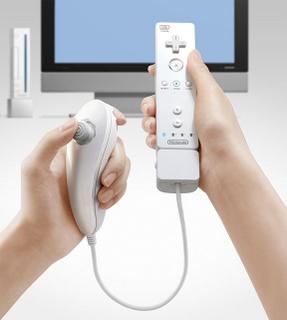 Q:
Q: What was your favorite revolution? French? American? Mexican?
KH: How much fun do you think I had playing Revolution air-hockey versus Miyamoto? I'm buying this day one, and I can't wait to see what they put out for it. If the release schedule is as balanced as the DS' -- with mass-appeal titles like Brain Training and Nintendogs going back and forth with gamers' games like
Ouendan and
Castlevania -- then it'll appeal to everyone.
Q: Do you have any additional info on the so-called shells for the controller?
KH: No new info on shells -- they didn't show any, but they talked about them. I'm not sure whether it makes sense to put the shell in the box, though, because that runs counter to their anyone-can-understand-this mentality. If the shells are cheap enough, they can just pack them in with any game that requires them.
Q: Is it possible to reach the lower A and B (ie X and Y) buttons with any degree of comfort when using the controller as a pointer? [I know they'll be easily reachable when the controller is held like a NES pad].
KH: You're not intended to use the A and B buttons for any sort of quick-response gameplay when the controller is vertical. So I doubt any developers will make you do that.
Q: Did the fishing demo feel natural?
KH: The fishing game was the only one that took me more than a second to grasp, because it uses depth perception. But after I got the hang of moving the rod around in a pseudo-3D space, it got easier.
Q: I'd like to hear your impressions of the analog attachment.
KH: I don't know what sort of impressions other than "
Metroid Prime 2 was comfortable and intuitive" I really need to give at this point. The analog attachment was really light. The wire was long enough. Moving, aiming, shooting, and turning took no -- zero -- conscious thought. The only problem I had was remembering which shoulder button scanned and which jumped. But I can't remember that very well on the GameCube either.
Q: This is probably a given, but was the crosshairs/cursor sensitive to acceleration in a similar way a mouse-cursor moves further across the screen the faster you move it?
KH: Shine a laser pointer on your TV screen, then move it around. That's exactly what it's like. When I first saw it, they hadn't yet explained what it DID. So I was like "what the Jesus is that." Then Miyamoto was like, check this out, and he starts waving it around and shooting boxes and my stomach felt like it had done a flip-flop.
Q: Will it require more sensors for multiplayer games?
KH: I seriously doubt that you need two sensor set-ups for multiple controllers. That would not exactly go along with Nintendo's simpler-is-better strategy.
Q: Was there a particular demo, aside from the Metroid one that you were really impressed with the technology at work? What kind of TV was this playing on, and did they make a peep about HD at all?
KH: After
Metroid Prime 2, I really loved the airplane demo. It was as if you were holding a toy plane in your hand, and everything you did with it in real life was reflected on the (very nice*) tv screen.* That's all I really know about the TVs they were using. And with the
Metroid Prime demo, I was waving the controller all the hell over the place really really fast and the cursor was always exactly where I wanted it.
Q: Did Nintendo provide snacks for you? (This poster was probably poking fun at Mr. Kohler’s real life stature and or perhaps suggesting he was bribed by Nintendo with food.)
KH: There were
no snacks. A few of us went to lunch, but that wasn't planned nor part of the day's activity.
Q: What genres do you think won't play well with this controller?
KH: We didn't play anything for six hours, so I really don't know. I'm not about to go sit on a chair and wave my wrist around for six hours to see how it feels. I think that will be a game design issue – designing software so that it's comfortable to play. That sort of issue is always important, though, no matter what sort of controller you have. You don't want to make a game that has you jerking two analog sticks in every which direction while jamming on buttons constantly...
Monkey Dew’s Final Thoughts:Kobun’s impressions have certainly made me much more enthusiastic about the Revolution controller and Nintendo’s next generation console as a whole. I haven’t felt this kind of excitement about a gaming console for some time. I certainly didn’t feel this excited before the GameCube launched. The closest experience would be nearly ten years ago when Nintendo, Sony and Sega moved into the 3D domain for the first time and every new piece of gaming information would have me dreaming about the ‘what-ifs’ of my favorite games being played in 3D and how the visuals would look.
Ten years later, Sony and Microsoft seem more interested in ramping up graphic power for their next entry into the gaming race than exploring virgin territory. I’m glad Nintendo is trying to move gaming into new territory again. Thank you for the
D-pad, L, R, X, Y buttons, Analog stick, Rumble pack, Wireless controller and now, the
Revolution controller.

